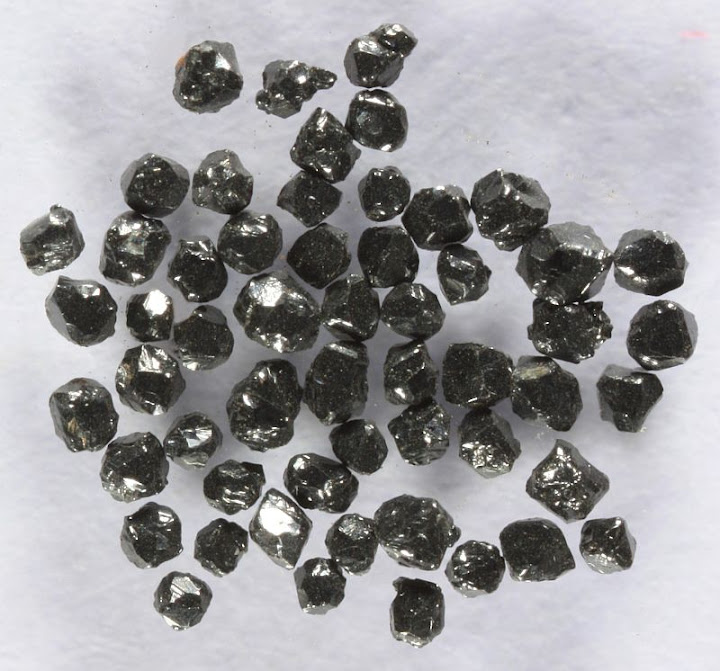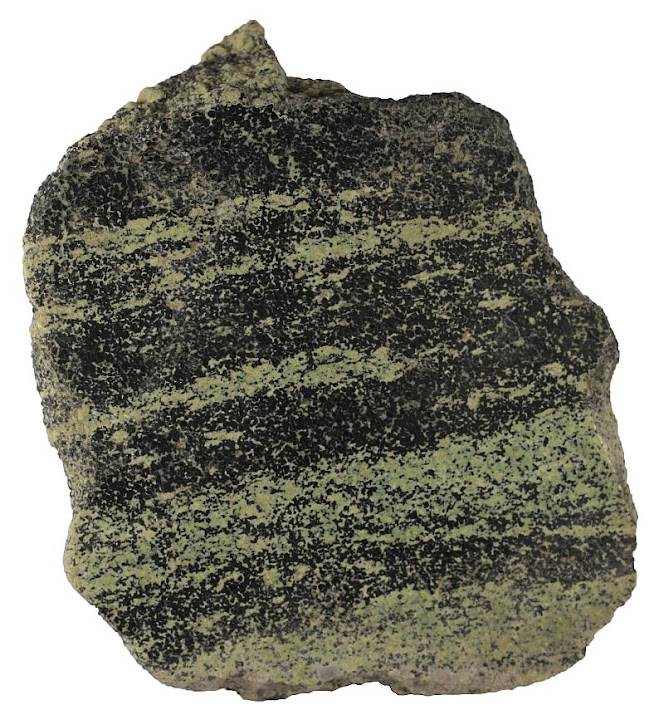Chromite is a black chromium-bearing mineral, FeCr2O4. It is a principal ore of chromium (Cr). Chromite is a member of the spinel group. These minerals share the same structure but differ in composition. Al and Mg in the lattice of spinel are replaced by Cr and Fe, respectively.

Crystals picked out of a chromite concentrate from the Rustenburg mine, Western Bushveld, South Africa. Width of view is 5 mm.
The appearance of chromite may be similar to magnetite (which also belongs to the spinel group but has slightly different structure). Both are opaque and occur in octahedral crystals (double pyramids with eight crystal faces). However, both minerals occur more often as anhedral or granular masses. It isn’t hard to tell them apart because chromite may be only weakly magnetic while magnetite shows very strong affinity to magnets.
Pure chromite is rare. It usually contains magnesium which replaces iron. Other elements like trivalent Fe, Zn, Mn, and Al may be present as well. Chromite that contains more Mg than Fe is named magnesiochromite. There is continuous solid solution between the two and most commonly natural crystals are somewhere in the middle between the two endmembers but more on the side of magnesiochromite. Hence, most chromites are probably not chromites sensu stricto.
This mineral is relatively resistant to weathering. It may be important constituent of sand but not everywhere. It is found in mafic and ultramafic rocks like pyroxenite and peridotite (including dunite). These rocks are widespread deep below in the mantle, but they are not common rocks near the surface. Best chances to find it in sand is near ophiolites. These are assemblages of rocks which once formed ocean floor but are now tectonically pushed on top of the continental landmasses. It is also found in some meteorites.
Chromite in igneous rocks may form bands or layers which are very important mineral resources. These layers are the result of a crystal settling in a magma chamber. Such deposits are for example Bushveld complex in South Africa and the Great Dike in Zimbabwe. It is among the first minerals to crystallize out of magma. Important chromite mining countries are Kazakhstan, South Africa, Zimbabwe, and India. Chrome is needed for a variety of purposes, but it is mostly used to make stainless steel.

Serpentinized ore from The Zhob Valley, Pakistan. Green is serpentine, black is chromite. This is a cumulate rock associated with ultramafic rocks. Width of sample is 6 cm.
You can take a much closer look into similar rock from the Stillwater complex in Montana. Here are thin section images and gigapans by Ron Schott.
Leave a Reply